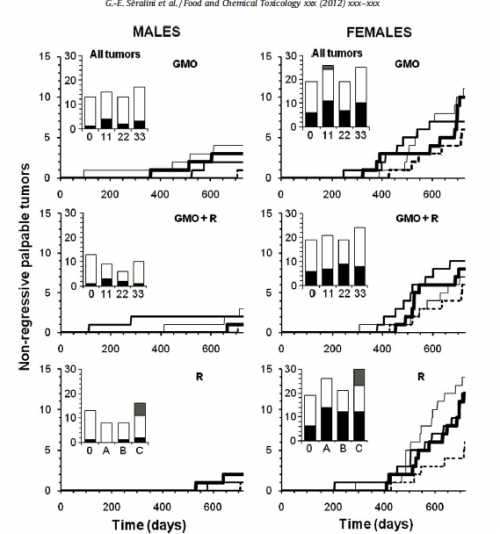Yesterday, JAMA released a theme issue on obesity with several articles of particular interest, starting with New York City Health Commissioner Tom Farley’s Viewpoint. About portion sizes, Dr. Farley notes:
As publicly traded companies responsive to the interests of their shareholders, food companies cannot make decisions that will lower profits, and larger portion sizes are more profitable because most costs of delivering food items to consumers are fixed….The sale of huge portions is driven by the food industry, not by consumer demand….The portion-size studies strongly suggest that, with a smaller default portion size, most consumers will consume fewer calories. This change will not reverse the obesity epidemic, but it can have a substantial effect on it.
Lots of interesting food for thought here. Take a look:
Viewpoint
The Role of Government in Preventing Excess Calorie Consumption: The Example of New York City
Thomas A. Farley, MD, MPH
JAMA. 2012;308(11):1093 doi:10.1001/2012.jama.11623
The Next Generation of Obesity Research: No Time to Waste
Griffin P. Rodgers, MD; Francis S. Collins, MD, PhD
JAMA. 2012;308(11):1095 doi:10.1001/2012.jama.11853
FDA Approval of Obesity Drugs: A Difference in Risk-Benefit Perceptions
Elaine H. Morrato, DrPH, MPH; David B. Allison, PhD
JAMA. 2012;308(11):1097 doi:10.1001/jama.2012.10007
Cardiovascular Risk Assessment in the Development of New Drugs for Obesity
William R. Hiatt, MD; Allison B. Goldfine, MD; Sanjay Kaul, MD
JAMA. 2012;308(11):1099 doi:10.1001/jama.2012.9931
Original Contribution
Exercise Dose and Diabetes Risk in Overweight and Obese Children: A Randomized Controlled Trial
Catherine L. Davis, PhD; Norman K. Pollock, PhD; Jennifer L. Waller, PhD; Jerry D. Allison, PhD; B. Adam Dennis, MD; Reda Bassali, MD; Agustín Meléndez, PhD; Colleen A. Boyle, PhD; Barbara A. Gower, PhD
JAMA. 2012;308(11):1103 doi:10.1001/2012.jama.10762
Association Between Urinary Bisphenol A Concentration and Obesity Prevalence in Children and Adolescents
Leonardo Trasande, MD, MPP; Teresa M. Attina, MD, PhD, MPH; Jan Blustein, MD, PhD
JAMA. 2012;308(11):1113 doi:10.1001/2012.jama.11461
Health Benefits of Gastric Bypass Surgery After 6 Years
Ted D. Adams, PhD, MPH; Lance E. Davidson, PhD; Sheldon E. Litwin, MD; Ronette L. Kolotkin, PhD; Michael J. LaMonte, PhD; Robert C. Pendleton, MD; Michael B. Strong, MD; Russell Vinik, MD; Nathan A. Wanner, MD; Paul N. Hopkins, MD, MSPH; Richard E. Gress, MA; James M. Walker, MD; Tom V. Cloward, MD; R. Tom Nuttall, RRT; Ahmad Hammoud, MD; Jessica L. J. Greenwood, MD, MSPH; Ross D. Crosby, PhD; Rodrick McKinlay, MD; Steven C. Simper, MD; Sherman C. Smith, MD; Steven C. Hunt, PhD
JAMA. 2012;308(11):1122 doi:10.1001/2012.jama.11164
Health Care Use During 20 Years Following Bariatric Surgery
Martin Neovius, PhD; Kristina Narbro, PhD; Catherine Keating, MPH; Markku Peltonen, PhD; Kajsa Sjöholm, PhD; Göran Ågren, MD; Lars Sjöström, MD, PhD; Lena Carlsson, MD, PhD
JAMA. 2012;308(11):1132 doi:10.1001/2012.jama.11792
Surgical vs Conventional Therapy for Weight Loss Treatment of Obstructive Sleep Apnea: A Randomized Controlled Trial
John B. Dixon, MBBS, PhD, FRACGP; Linda M. Schachter, MBBS, PhD; Paul E. O’Brien, MD, FRACS; Kay Jones, MT&D, PhD; Mariee Grima, BSc, MDiet; Gavin Lambert, PhD; Wendy Brown, MBBS, PhD, FRACS; Michael Bailey, PhD, MSc; Matthew T. Naughton, MD, FRACP
JAMA. 2012;308(11):1142 doi:10.1001/2012.jama.11580
Dysfunctional Adiposity and the Risk of Prediabetes and Type 2 Diabetes in Obese Adults
Ian J. Neeland, MD; Aslan T. Turer, MD, MHS; Colby R. Ayers, MS; Tiffany M. Powell-Wiley, MD, MPH; Gloria L. Vega, PhD; Ramin Farzaneh-Far, MD, MAS; Scott M. Grundy, MD, PhD; Amit Khera, MD, MS; Darren K. McGuire, MD, MHSc; James A. de Lemos, MD
JAMA. 2012;308(11):1150 doi:10.1001/2012.jama.11132
Editorial
Progress in Filling the Gaps in Bariatric Surgery
Anita P. Courcoulas, MD, MPH
JAMA. 2012;308(11):1160 doi:10.1001/jama.2012.12337
Progress in Obesity Research: Reasons for Optimism
Edward H. Livingston, MD; Jody W. Zylke, MD
JAMA. 2012;308(11):1162 doi:10.1001/2012.jama.12203



